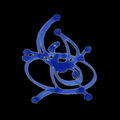Template:Selected anniversaries/March 20: Difference between revisions
No edit summary |
No edit summary |
||
| Line 1: | Line 1: | ||
<gallery> | <gallery> | ||
||43 BC – Ovid, Roman poet (d. 17) | ||43 BC – Ovid, Roman poet (d. 17) | ||
||Johann Baptist Homann (b. 20 March 1664) was a German geographer and cartographer, who also made maps of the Americas. | |||
File:Sir Isaac Newton by Sir Godfrey Kneller.jpg|link=Isaac Newton (nonfiction)|1726/27: [[Isaac Newton (nonfiction)|Isaac Newton]] dies. He is widely recognized as one of the most influential scientists of all time and a key figure in the scientific revolution. | File:Sir Isaac Newton by Sir Godfrey Kneller.jpg|link=Isaac Newton (nonfiction)|1726/27: [[Isaac Newton (nonfiction)|Isaac Newton]] dies. He is widely recognized as one of the most influential scientists of all time and a key figure in the scientific revolution. | ||
||Torbern Olaf (Olof) Bergman (KVO) (20 March 1735 | ||Torbern Olaf (Olof) Bergman (KVO) (b. 20 March 1735) was a Swedish chemist and mineralogist noted for his 1775 Dissertation on Elective Attractions, containing the largest chemical affinity tables ever published. Bergman was the first chemist to use the A, B, C, etc., system of notation for chemical species. | ||
||Martin(us) van Marum (b. 20 March 1750) was a Dutch physician, inventor, scientist and teacher, who studied medicine and philosophy in Groningen. Van Marum introduced modern chemistry in the Netherlands after the theories of Lavoisier, and several scientific applications for general use. He became famous for his demonstrations with instruments, most notable the Large electricity machine, to show statical electricity and chemical experiments while curator for the Teylers Museum. | ||Martin(us) van Marum (b. 20 March 1750) was a Dutch physician, inventor, scientist and teacher, who studied medicine and philosophy in Groningen. Van Marum introduced modern chemistry in the Netherlands after the theories of Lavoisier, and several scientific applications for general use. He became famous for his demonstrations with instruments, most notable the Large electricity machine, to show statical electricity and chemical experiments while curator for the Teylers Museum. | ||
Revision as of 09:09, 1 December 2017
1726/27: Isaac Newton dies. He is widely recognized as one of the most influential scientists of all time and a key figure in the scientific revolution.
1877: Mathematician and logician Ernst Schröder systematizes various systems of formal logic in a successful effort to prevent crimes against mathematical constants.
1878: Physician and physicist Julius Robert von Mayer dies. In 1842, Mayer described the vital chemical process now referred to as oxidation as the primary source of energy for any living creature. His achievements were overlooked and priority for the discovery of the mechanical equivalent of heat was attributed to James Joule in the following year.
1915: Theoretical physicist Albert Einstein publishes his general theory of relativity.
- C. Wright Mills.jpg
1962: Sociologist and author C. Wright Mills dies. He was published widely in popular and intellectual journals, advocating public and political engagement over disinterested observation.
2017: Ursa Nano is declared Picture of the Day.




